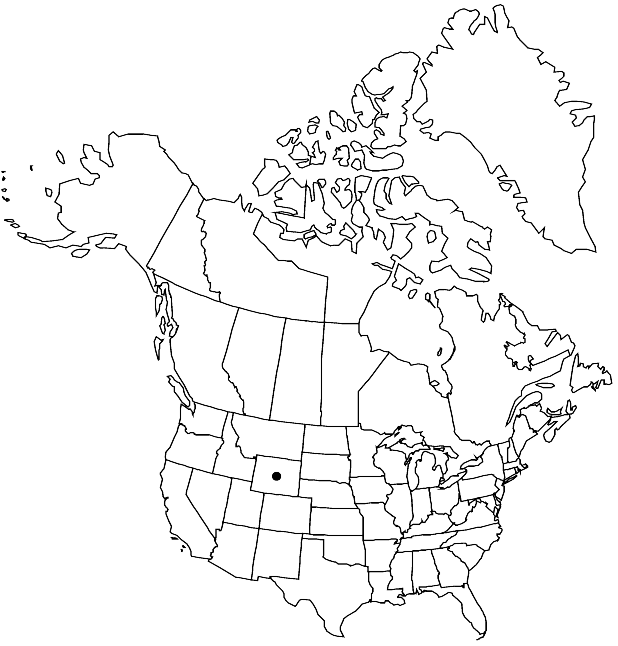Descurainia torulosa
J. Arnold Arbor. 64: 499. 1983.
Perennials; (short-lived); eglandular; moderately to densely pubescent throughout, trichomes dendritic. Stems (several to numerous from base), decumbent, usually unbranched, rarely branched distally, 0.4–1.5 dm. Basal leaves: petiole 0.3–1.4 cm; blade pinnate, oblanceolate in outline, 0.9–3.5 cm, lateral lobes (3–5 pairs), oblanceolate to oblong, (2–5 × 0.5–1.5 mm), margins entire. Cauline leaves sessile or shortly petiolate; blade smaller distally, distal lobes often narrower, surfaces moderately pubescent. Racemes considerably elongated in fruit. Fruiting pedicels erect to erect-ascending, straight, 1.5–3 mm. Flowers: sepals ascending, yellowish, oblong, 0.9–1.2 mm, pubescent; petals narrowly oblanceolate, 1.4–2 × 0.4–0.6 mm; median filaments 1.6–2 mm; anthers 0.2–0.3 mm. Fruits erect, (subappressed to rachis basally), narrowly linear, strongly torulose, 6–15 × 0.6–0.8 mm, (curved outward distally); valves each with obscure midvein, (pubescent); septum not veined; ovules 10–18 per ovary; style obsolete, 0.1–0.3 mm, sparsely pubescent. Seeds uniseriate, reddish brown, oblong, 1–1.3 × 0.5–0.6 mm.
Phenology: Flowering Jun–Jul.
Habitat: Rocky slopes at bases of cliffs
Elevation: ca. 3100 m
Distribution

Wyo.
Discussion
Of conservation concern.
Descurainia torulosa is known from Fremont, Park, Sweetwater, and Teton counties. It was studied by J. S. Bricker et al. (2000), who concluded that its status and relationship to D. incana remain unresolved as they were unable to find a set of morphological characters that consistently separated the two taxa. We believe that D. torulosa should be maintained, and that it is easily distinguished from D. incana by having fruits strongly torulose (versus weakly or not torulose), pubescent (versus glabrous), and distinctly curved (versus straight) distally, sparsely pubescent (versus glabrous) styles, fruit valves each with obscure (versus distinct) midvein, and stems decumbent, unbranched, and often several (versus stems erect, branched, and simple) from the base.
Descurainia torulosa is in the Center for Plant Conservation’s National Database of Endangered Plants.